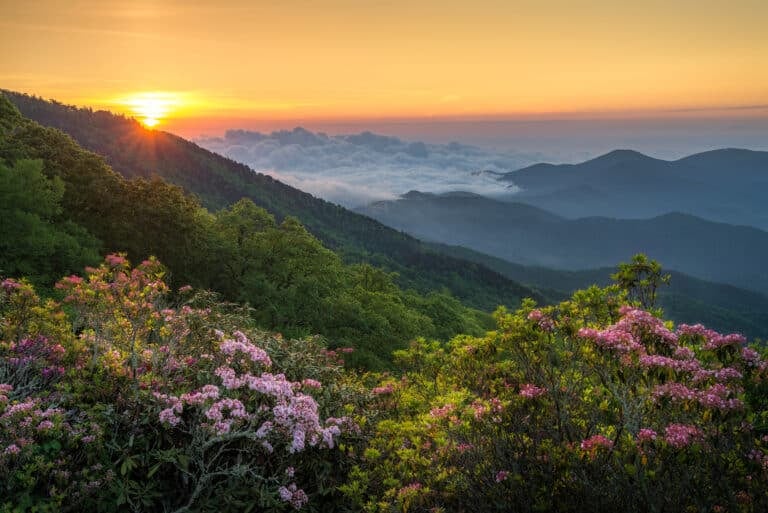1. Kicking Butts
The state of Maryland is officially smoke-free, at least indoors. The statewide ban passed last year by the General Assembly went into effect in March, making it illegal to smoke inside any bars, restaurants and private clubs. Baltimore put up no fuss, actually voting to keep out the cancer sticks ahead of the rest of the state, joining other cities like New York, Philadelphia, and nearby Washington, D.C.
——————–
2. Dominion Over All?
Dominion Power has proposed building a massive, high-voltage transmission line through Northern Virginia that would lock the Commonwealth into reliance on coal-burning energy sources. The massive 500,000-volt power line would also cross or border several areas of scenic and historic significance as it would carry electricity from dirty coal-fired power plants to high-demand urban centers around Washington D.C. and the mid-Atlantic. Dominion’s plans tie directly into a new effort by the U.S. Department of Energy to designate “National Interest Electric Transmission Corridors” that would essentially bypass many rules for energy projects within the corridors. The proposed corridor designation gives federal authorities the power to overrule Virginia and to seek unprecedented federal powers of eminent domain for transmission lines.
——————–
3. Virginia is for A.T. Lovers
It’s no secret that Virginia is a breeding ground for cheesy vanity license plates. Last year Virginia had more personalized plates than any other state, due to the cheap $10 cost. Now hikers have an easy opportunity to get in on the action and show some support for the Appalachian Trail. A bill was recently passed in the state senate to offer a special Appalachian Trail license plate to benefit the Appalachian Trail Conference (ATC), the famous footpath’s leading nonprofit advocate and maintenance workhorse. If passed in the house, the ATC would need 350 pre-paid plate applicants by July to get the plates made. The only other state with an A.T. plate is North Carolina. Apply here: www.appalachiantrail.org.
——————–
4. West Virginia Gone Wild
In January, Representative Nick Rahall (D-WV) introduced the Wild Monongahela Act, a bill that could expand three existing wilderness areas (Cranberry, Dolly Sods, and Dry Fork) and create four new areas (Big Draft, Cheat Mountain, Roaring Plains West, and Spice Run) in the Monongahela National Forest. If passed, the plan would create the first new designated wilderness—federally protected land that prohibits motorized access, construction, and any commercial activity—in 25 years. The bill will add 47,000 acres to the Mon’s existing 78,000 wilderness acres. In an article in the Charleston Gazette, Representative Rahall explained, “It is of paramount importance that we set aside some of God’s handiwork in our forests by preserving these federal lands in their pristine state.” Amen, brother.
——————–
5. Mammoth Mountain Bikers
Mammoth Cave National Park was one of the first national parks to allow mountain biking on trails when they opened 12 miles of singletrack to fat tires in 1999. It was a successful two-year trial agreement that has led to the opportunity for building more singletrack in the future. As part of Mammoth’s Comprehensive Trail Plan update, the park has included an option that would allow for the construction of six miles of new trail for mountain bikers and hikers.
——————–
6. Trail for Trail
Tennessee hikers Susan Baxley and Andrew Grizzell recently began their first Appalachian Trail thru-hike. But the pair’s mission in hiking one long trail is to raise awareness for another. The Great Eastern Trail (GET) is a new footpath that will run for over 2,000 miles between Alabama and New York. Created by the American Hiking Society and a long list of trail partners, the GET will link existing trails with newly developed connections through nine states. Running just to the west of the A.T., it is intended to alleviate traffic on the famous footpath and link several other long trails in the Appalachians. In total, it will connect over 10,000 miles of trails on the East Coast between New York’s North Country Scenic Trail and the Florida National Scenic Trail. Baxley and Grizzell will spend their time on the A.T. telling other hikers about the GET in an effort to raise awareness and funds for the new trail.
——————–
7. Saving Shope Creek
Don’t doubt the power of public comments. Thanks to public input, the U. S. Forest Service announced that it will significantly reduce the number of acres to be logged in the Shope Creek Project, located five miles east of Asheville in the Pisgah National Forest. The USFS originally proposed logging 68 acres of forest and clearing five miles of roads, but they scaled back their plans after receiving extensive public comments. As a result, the agency will only log 22 acres, and it will designate 123 acres as old growth, which provides permanent protection from future cutting.
——————–
8. Logging Proposed Near A.T. and Max Patch
The Forest Service has proposed logging 306 acres near the Appalachian Trail and Max Patch Bald, a popular panoramic vista and recreation spot. The Harmon Den project also calls for herbicide applications on over 1,300 acres within the Pigeon River watershed. While the plan designates small patches of the forest as old-growth, environmental groups say the negative impacts of the proposed logging project far outweigh the token designations of old growth.
——————–
9. Redford on the A.T.
Will Springer Mountain see some celebrity when this year’s class of thru-hikers hits the Appalachian Trail? Hollywood was recently abuzz with the news that Robert Redford has announced that his next project will be playing Bill Bryson in a film adaptation of the author’s famous memoir A Walk in the Woods. The comical book accounts Bryson’s attempted thru-hike with a fellow middle-aged, out-of-shape friend. Production dates are currently in limbo because the writer’s strike held up script approval, but a few lucky thru-hikers this summer may cross paths with film crews.






